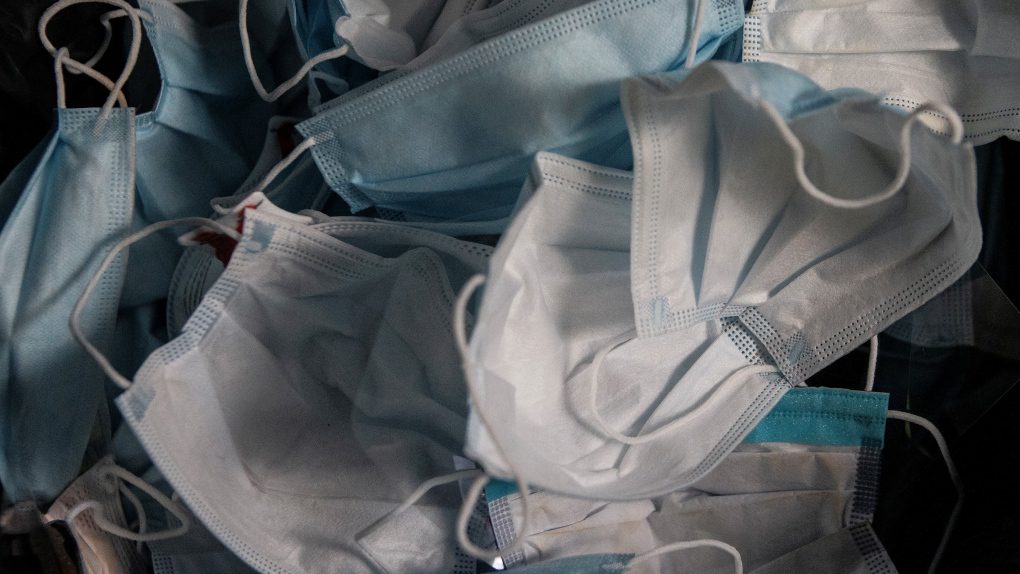Global Courant 2023-05-06 13:52:59
Even before the World Health Organization declared Friday that the COVID-19 pandemic was no longer a “public health emergency of international concern,” many Canadians had already given up wearing masks as mandates were lifted in most public places.
While WHO Director-General Tedros Adhanom Ghebreyesus noted that Friday’s statement “doesn’t mean COVID-19 is over,” many people are likely to interpret it that way, said Dr. Allison McGeer, an infectious disease specialist and microbiologist at Sinai Health Systems in Toronto.
“Frankly, most of the behavior, at least in Canada, already reflects most people’s view that the pandemic is over,” McGeer said.
Still, infectious disease specialists hope that the practice of masking, which emerged in this country in response to the pandemic, will continue at certain times and in certain places to prevent the spread of not only COVID-19, but also flu and respiratory help reduce syncytial. virus (RSV) as well.
While most mask mandates have been lifted, some major hospitals still require masks in patient care settings, which makes sense for Dr. Lynora Saxinger, an infectious disease specialist at the University of Alberta in Edmonton.
“In the ‘old days’, which I think most of us can hardly remember now, you were whizzing around the hospital and people had all sorts of symptoms,” Saxinger said.
“You’d see someone for possible pneumonia, they’d cough and you’d just walk into the room… So I think there’s been a net shift in willingness and proactivity to use masks (in healthcare),” she said .
Dr. Fatima Kakkar, a pediatric infectious disease specialist at CHU Sainte-Justine in Montreal, said she also plans to continue using masks when seeing patients.
Masking not only helps protect the health care provider, but also helps prevent the spread of viruses to other “very vulnerable patients” in the hospital, she said.
“I actually can’t imagine seeing my patients without a mask,” Kakkar said.
Masking could be a “positive legacy” of the pandemic, she said.
“I hope the masking in these high-risk environments normalizes in a way, because you know, it just becomes a reflex. You’re going to see a high-risk cancer patient, you’re going to see a high-risk newborn.” , it makes sense that you want to protect them.”
Long-term care facilities and other community settings, such as group homes, are other “obvious” places where masking should be considered to protect vulnerable people, especially during times when there is a lot of COVID-19 or flu circulating in the air. community, McGeer said.
“I think a lot of people dealing with long-term care would be willing to wear masks if they didn’t have outbreaks,” she said.
But whether masking will continue to be widely used in hospitals and care homes “depends (in part) on what happens with COVID in the future,” including whether it becomes a largely seasonal virus, McGeer said.
Saxinger said it’s also important to assess every situation in hospitals and other healthcare facilities. For example, she may not put on a mask when walking down a hospital hallway, but may consider wearing a mask when approaching an elderly patient.
If an elderly patient has trouble hearing her, “can I take my mask off so they can hear me,” she said.
Outside of healthcare, doing such a risk assessment could help the general public decide whether or not to wear a mask under certain circumstances, infectious disease experts say.
People who are “immunocompromised and clearly more at risk if they catch something” may decide to continue wearing masks to protect themselves, McGeer said.
“I still encourage the elderly in my life … that if they are on a plane or in a high-risk environment to mask up,” Kakkar said.
In addition to protecting themselves, people can also assess their risk to others, she said.
“The best principle is that if you’re sick, you stay home…but that’s not always feasible,” says Kakkar.
In those cases, the next best thing would be to wear a mask while you’re out, she said. “I think if we could normalize that, it would help reduce the spread.”
Ultimately, “there’s a fair bit of common sense” to deciding when and where to wear a mask, Saxinger said.
“Am I still masking up at the grocery store? When I’m symptom-free and don’t have a cold or anything and I’m in a grocery store that’s almost empty because I always go at odd times, not necessarily,” she said.
“Have I been around a lot of sick people lately in a way that seems like a higher risk? And then if I go in and it happens to be senior night or something at the grocery store, I can choose to wear a mask to carry.”
It’s also important for governments and public health authorities to make sure people have access to information, such as whether there’s a high rate of virus transmission in the community “allowing them to make those decisions as they go,” Saxinger said.
While McGeer would like to see public health measures such as masking when needed and better hand washing continued, she is “not hopeful that many things will remain as a legacy of COVID.”
“The problem with pandemics is that the desire to put them behind us is so strong that it’s really hard to hold on to anything,” she said.
With files from The Associated Press
This report from The Canadian Press was first published on May 6, 2023.
Canadian Press health coverage is supported by a partnership with the Canadian Medical Association. CP is solely responsible for this content.








